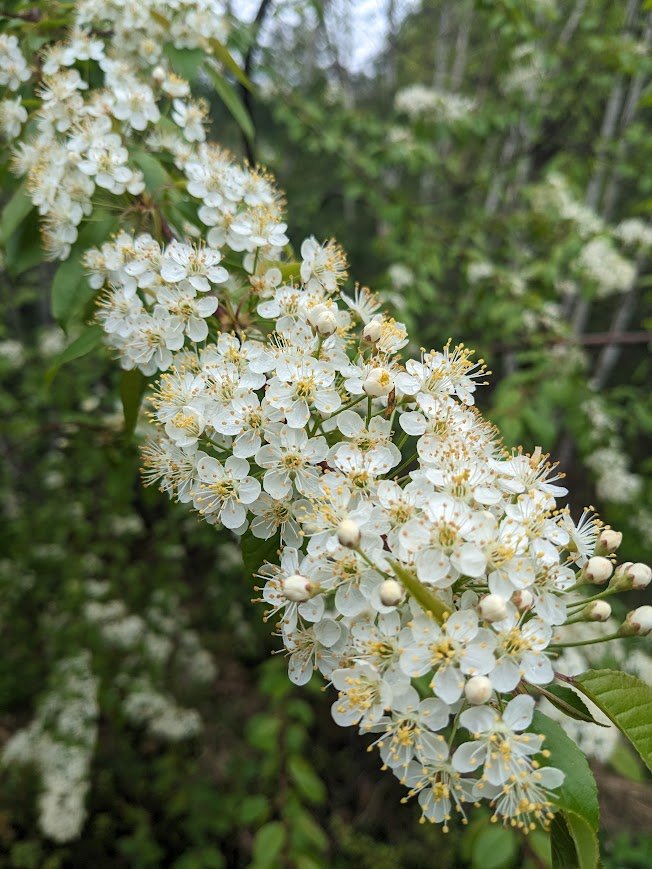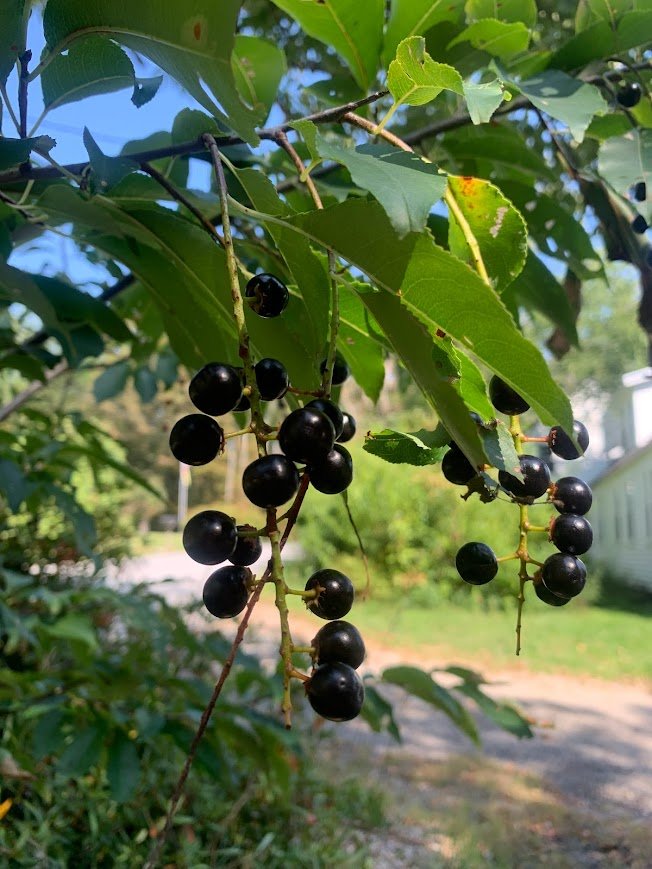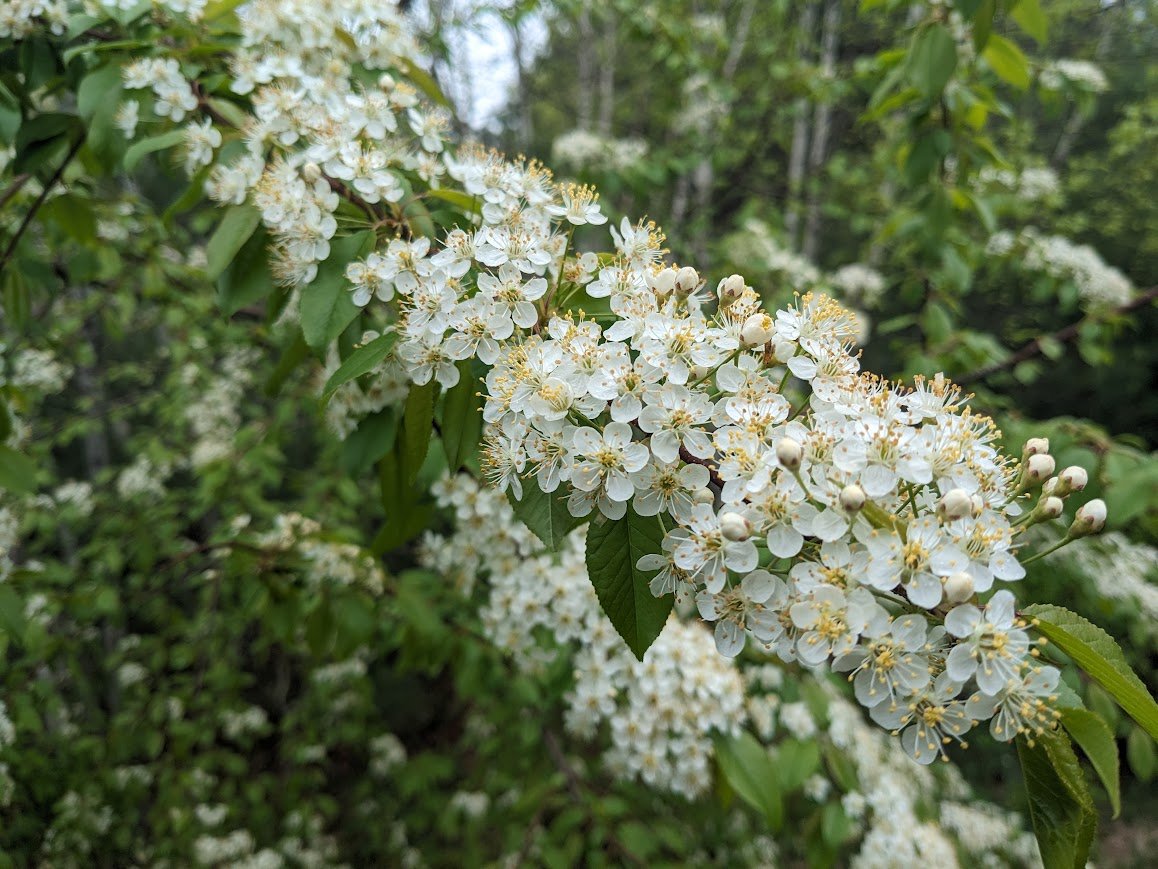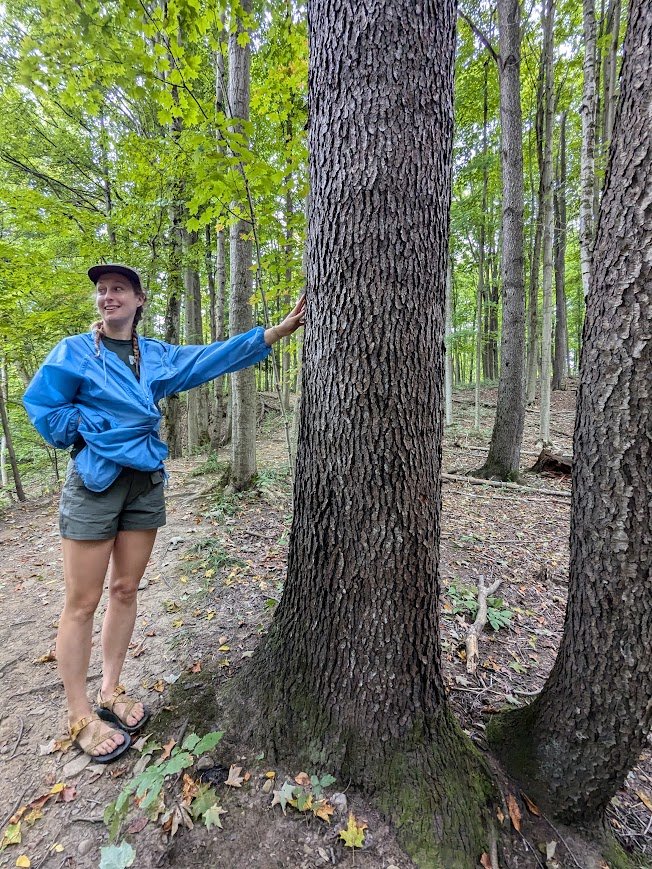 Image 1 of 5
Image 1 of 5

 Image 2 of 5
Image 2 of 5

 Image 3 of 5
Image 3 of 5

 Image 4 of 5
Image 4 of 5

 Image 5 of 5
Image 5 of 5






Black Cherry - Bare Root Tree
2nd Year Seedling ~1’- Bare Root Tree
(Prunus serotina)
Black Cherry is the largest of the native Prunus species and has a myriad of ecosystem services and other uses. In May, clusters of white flowers attract bees, butterflies, and other insects. The flowers turn to small dark purple cherries that ripen in August. These are excellent in syrups, jams, jellies, but can also be eaten alone. Black Cherry has long been used as a flavoring for medicines but it also contains many antioxidants which reduce cell damage. The wood of Black Cherry is very hard and prized for furniture building and smoking foods.
Adaptable to a wide range of environments, this native tree will grow quickly and provide fruit for animals and humans alike for many years.
Zone: 3-9
Soil: Adaptable to a variety of soil types, including loam, clay, and sandy soils.
Light: Prefers full sun to partial shade, thriving in both open spaces and dappled sunlight beneath the forest canopy.
2nd Year Seedling ~1’- Bare Root Tree
(Prunus serotina)
Black Cherry is the largest of the native Prunus species and has a myriad of ecosystem services and other uses. In May, clusters of white flowers attract bees, butterflies, and other insects. The flowers turn to small dark purple cherries that ripen in August. These are excellent in syrups, jams, jellies, but can also be eaten alone. Black Cherry has long been used as a flavoring for medicines but it also contains many antioxidants which reduce cell damage. The wood of Black Cherry is very hard and prized for furniture building and smoking foods.
Adaptable to a wide range of environments, this native tree will grow quickly and provide fruit for animals and humans alike for many years.
Zone: 3-9
Soil: Adaptable to a variety of soil types, including loam, clay, and sandy soils.
Light: Prefers full sun to partial shade, thriving in both open spaces and dappled sunlight beneath the forest canopy.

